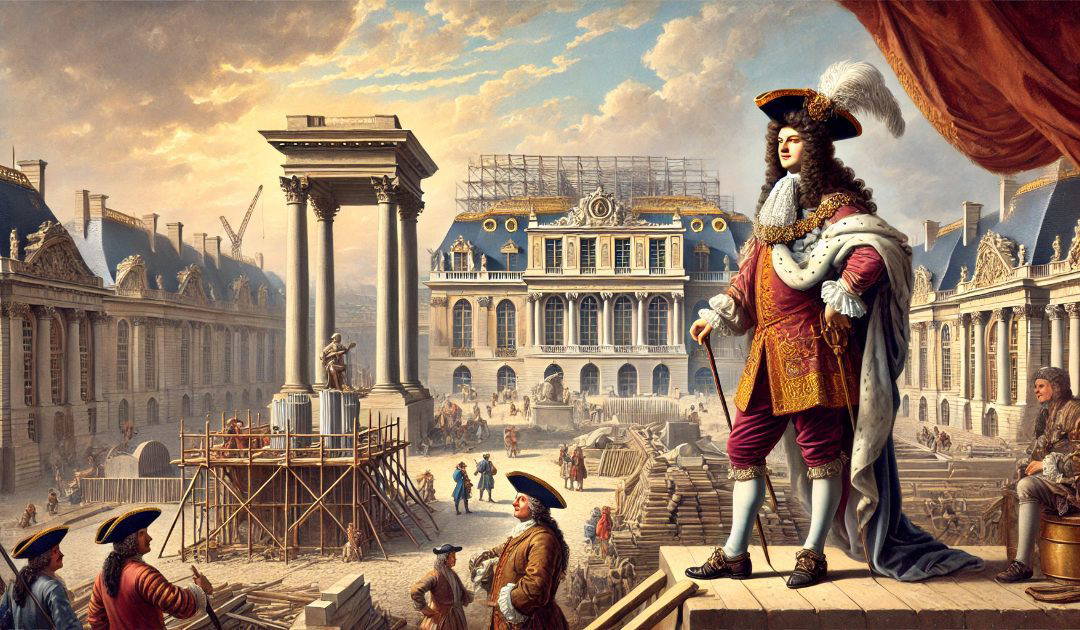On the 10th of March, 1661, Louis XIV began his personal rule of France following the death of Cardinal Mazarin, his premier. I have completed the first draft of the fifth book in the Sir Anthony Standen Adventures, in which Louis XIII, Louis XIV’s father, is a key character.
King Louis XIV of France (1638 – 1715) was one of the most influential and longest-reigning monarchs in European history, ruling for an astonishing 72 years from 1643 until his death. Known as the “Sun King” (Le Roi Soleil), he embodied the concept of absolute monarchy, centralising power in the crown and making France the dominant force in Europe. His reign saw cultural brilliance, territorial expansion, and the grandeur of Versailles, but also financial strain and near-constant warfare.
Louis XIV was born on the 5th of September 1638, to King Louis XIII and Queen Anne of Austria. He was seen as a divine gift to the royal family, having been born after 23 years of marriage. When his father died in 1643, Louis became king at just four years old. His mother, Queen Anne, served as regent, while Cardinal Mazarin effectively ruled France.
During his youth, France was embroiled in the Fronde (1648 – 1653), a series of civil wars where nobles and the Parisian Parliament rebelled against the monarchy’s growing power. The Fronde deeply influenced young Louis, instilling in him a distrust of the nobility and a determination to rule without interference. When Mazarin died in 1661, the 22-year-old Louis shocked his court by declaring he would rule without a chief minister, something no French king had done in over a century.
Louis XIV’s rule epitomised absolutism, the idea that the monarch held all power and derived authority from God. He famously declared:
“L’Etat, c’est moi” (“I am the state”).
To cement his authority, Louis diminished the power of the nobility, forcing them to live at Versailles, his magnificent palace built outside Paris. By keeping nobles engaged in elaborate court rituals and ceremonies, he prevented them from gaining political power.
Louis also reformed France’s bureaucracy, empowering intendants, royal officials who administered justice, collected taxes, and enforced royal decrees. His finance minister, Jean-Baptiste Colbert, helped build France’s wealth through mercantilist policies, promoting industry, trade, and colonisation. However, Louis’ extravagant spending on Versailles and constant wars strained the economy.
Louis XIV pursued an aggressive foreign policy, seeking to expand France’s borders and dominate Europe. His reign saw multiple conflicts. Louis attempted to claim Spanish Netherlands but was checked by a European coalition.One of his most significant conflicts was the War of Spanish Succession which was fought to secure the Spanish throne for his grandson, Philip V. Though Philip remained king, France faced economic devastation. These wars enhanced France’s prestige but left the country financially drained and burdened with high taxes.
Louis XIV was a devout Catholic and sought religious unity. In 1685, he revoked the Edict of Nantes, which had granted religious tolerance to Protestants (Huguenots). This led to widespread persecution, forcing thousands of skilled Huguenots to flee France, weakening its economy.
One of Louis XIV’s greatest legacies is the Palace of Versailles, a symbol of absolute monarchy and opulence. Originally a hunting lodge, he transformed it into an architectural masterpiece with extravagant gardens, grand halls (like the Hall of Mirrors), and elaborate court ceremonies. Versailles became the centre of French political and cultural life.
Louis XIV died on the 1st of September, 1715, just days before his 77th birthday. His great-grandson, Louis XV, succeeded him, as both his son and grandson had predeceased him.
While Louis XIV left behind a powerful, culturally rich France, his wars and extravagant spending led to financial troubles that would contribute to the eventual French Revolution (1789). Yet, his influence on monarchy, governance, and French culture remains unparalleled. He was, and remains, the ultimate symbol of absolute monarchy and royal grandeur.

